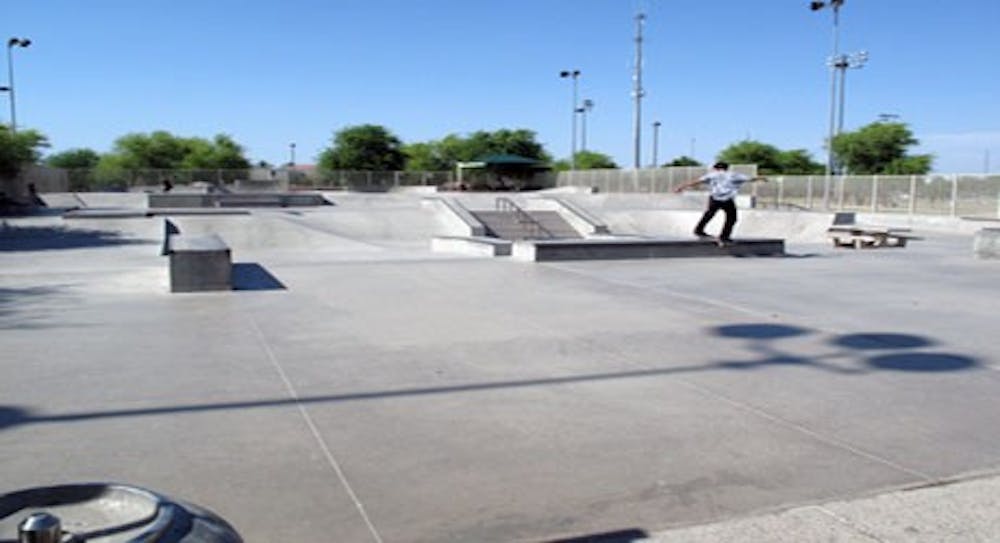Action sports such as skateboarding and BMX bike riding have been around since the 1950s and 1960s, but after the launch of the X Games in 1995 these alternative sports have grown into multimillion dollar industries.
The growth of action sports has fueled a need for facilities around the country. Athletes of these sports have worked hard for years advocating for free, public parks to legally use. So often they obtain a bad reputation in the eyes of the public because they use obstacles in urban areas to perfect their craft.
Athletes grinding down handrails, flying over huge sets of stairs, flipping, whipping and spinning their bikes or boards while doing so, can be seen in almost any downtown or university across the country. Although skaters and BMX riders understand that using public and private property as their playground is illegal, many don’t have a choice.
Public skate parks are sprouting up all over the country, but with cities facing cutbacks and a slow moving economy, many of these facilities are put on hold until funding can be allocated.
However, when it comes to building skate parks, public officials and parks departments are often in the dark about what should be provided and how much space should be reserved for these unconventional athletes.
According to statistics provided by The Tony Hawk Foundation, there are currently 7.3 million skaters in the country. Dividing that number by the total population means 2.3 percent of the U.S. population skates, allowing for any community around the country to assume 2.3 percent of its residents are active skaters.
In 2009, there were just over 68,000 students enrolled at ASU, according to the ASU website. With statistics from The Tony Hawk Foundation, ASU had more than 1,500 active skaters within its community.
During any weekday while classes are in session, it seems almost every other student is cruising by on a piece of wood with four wheels. Obviously, not every casual skater in flip-flops weaving through pedestrians will partake in the use of a skate park facility, but the core athletes most likely would.
Peter Whitely, the programs director for The Tony Hawk Foundation, said 20 percent of active skateboarding populations are skaters who would benefit from using a skate park facility. Using the data from 2009, over 300 skaters could take advantage of a skate park on campus. As enrollment numbers climb, the need for such facilities will continue to increase.
These numbers are solely based on skaters. They do not include freestyle BMX bike riders or inline skaters who could also benefit from a skate park.
Understanding the appeal of these action sports is simple. Athletes do not need a team or multiple participants to partake in the recreation. Skaters and bike riders go at their own pace, progressing and learning tricks as they see fit. It’s an open book of possibilities and many of these athletes consider their sport more of an art form than exercise or recreation.
“Recreation is an important part of health, and no student should be without access to recreational facilities,” Whitely said. “Students and non-students alike need to periodically blow some steam physically, and for many, the constraints and planning required for organized sports simply isn't practical.”
Brad Siedlecki, a graduate of ASU’s School of Landscape Architecture, is the owner of Pillar Design Studios, an architecture firm that specializes in designing and building action sports facilities. Siedlecki, a longtime skateboarder, has designed and built skate parks all over the country and says action sports athletes are often overlooked by municipalities because they are not considered a mainstream hobby.
“Skateboarding and BMX continue to grow year after year while so many traditional sports have seen nothing but a decline,” Siedlecki said. “People often associate these athletes with bad elements because they don’t understand their sports. These kids and adults are creative and athletic, and it’s crucial for them to have a safe, legal place to ride.”
A skate park on school grounds is not a new concept. The University of Maine’s Alumni Association is actively pursuing a facility that would be built on campus and open to the broader public. The Martin Luther King Elementary School in the lower ninth ward of New Orleans will be breaking ground on its skate park in July, according to Whitely.
However it does not appear that ASU will build a skate park in the near future.
“We are currently expanding the Tempe campus recreation facility based on what students have identified to be priorities through surveys,” Julie Kipper, the associate director of campus recreation at ASU, said. “As we went through the process of developing the program scope, a skate park was not a priority.”
Reach the reporter at Michael.g.hines@asu.edu





